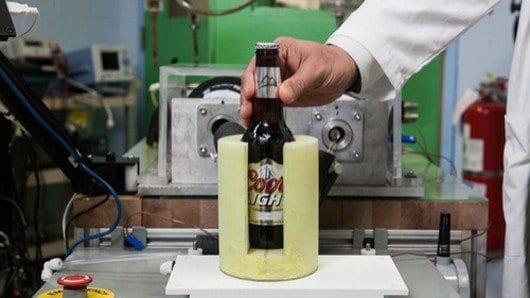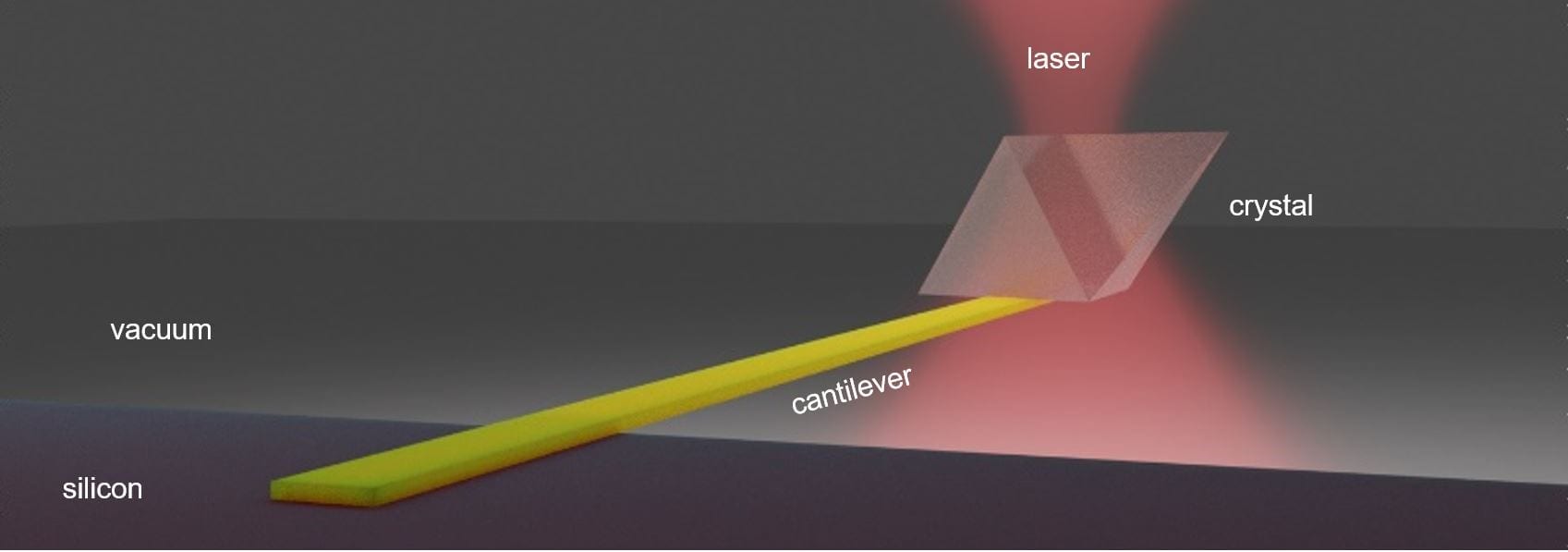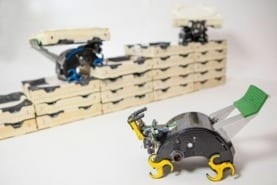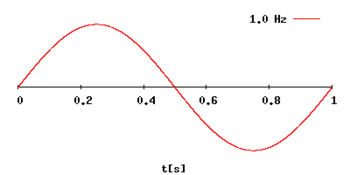
Predicted to be 20 to 30 percent more efficient that current technology
The fridge is the most common of common household appliances. Despite improvements in efficiency over the years, they remain one of the biggest users of electricity in the home, relying on chemical refrigerant and a compressor to transfer heat from the inside to the outside of the fridge. GE researchers have now developed a new type of refrigeration technology using magnets that is more environmentally friendly and is predicted to be 20 to 30 percent more efficient that current technology … and it could be in household fridges by the end of the decade.
Magnetic refrigeration is not a new idea. Ever since German physicist Emil Warburg observed in the 1880s that certain materials changed temperature when exposed to a changing magnetic field – known as the magnetocaloric effect – there have been efforts to create refrigerators based on the technique.
Such magnetic refrigeration systems were developed as far back as the 1930s, and researchers at the Los Alamos National Laboratory (LANL) in New Mexico successfully achieved a few degrees of refrigeration in the 1980s. However, the technology has failed to make it into household refrigerators as it relies on superconducting magnets that themselves need to be cooled to extremely low temperatures, making it not cost- or energy-efficient for household use.
GE teams in the US and Germany turned their collective efforts to the task a decade ago and built a cascade from special magnetic materials. Each step of the cascade lowered the temperature slightly but after five years of work they were only able to realize cooling of just 2° F (1° C) with a prototype that Michael Benedict, design engineer at GE Appliances, describes as a “huge machine.”
A breakthrough then came courtesy of the research team’s materials scientists who developed a new type of nickel-manganese alloys for magnets that could function at room temperatures. By arranging these magnets in a series of 50 cooling stages, the team have managed to reduce the temperature of a water-based fluid flowing through them by 80° F (45° C) with a device that is, according to Benedict, “about the size of a cart.”
The Latest on: Refrigeration technology
[google_news title=”” keyword=”Refrigeration technology” num_posts=”10″ blurb_length=”0″ show_thumb=”left”]
via Google News
The Latest on: Refrigeration technology
- Millions of semi-trucks on US roads still rely on fossil fuels. Cutting-edge EV tech in California could change thaton May 1, 2024 at 1:30 am
On a recent cloudless spring day on the outskirts of Gilroy, California, Christian Martorella accelerated an 18-wheeler past budding orchards. But instead of the roar of a diesel engine, the cab ...
- Refrigerator & Freezer Market Projected to Reach $269.16 billion by 2030 - Exclusive Report by 360iResearchon April 30, 2024 at 7:33 pm
The report titled "Refrigerator & Freezer Market by Type (Bottom-freezer Refrigerator, French Door Refrigerator, Side-by-Side ...
- IOR to mark World Refrigeration Day with Lord Kelvin webinaron April 29, 2024 at 9:43 am
The Institute of Refrigeration (IOR) will mark this year’s World Refrigeration Day (WRD) with a webinar celebrating the 200th anniversary of the birth of ...
- Vitesco and Sanden join on BEV thermal managementon April 29, 2024 at 8:49 am
Vitesco Technologies, the drive technology and electrification products supplier ... Sanden - known for its auto a/c compressors - is developing a compact refrigeration unit using the natural ...
- PFG unveils ‘sustainable’ distribution center modelon April 29, 2024 at 6:05 am
Foodservice company partners with Advanced Energy Machines, Volvo Trucks, FreeWire, and GridMarket to outfit its Gilroy, California, facility with direct-emissions-free ...
- Refrigeration that cools with less fuelon April 24, 2024 at 5:59 am
Refrigeration energy usage and costs are a hot topic so it pays to choose models that are both efficient and help you save on your energy bills.
- Industrial Refrigeration Systems Market Size is projected to reach USD 29.07 billion by 2031, growing at a CAGR of 4.4%: Straits Researchon April 22, 2024 at 7:50 am
According t, “The global industrial refrigeration systems market size was valued at USD 19.73 billion in 2022. It is estimated to reach USD 29.07 billion by 2031, growing at a CAGR of 4.4% during the ...
- Novum’s LEAP™ Technology Sets A New Benchmark In Eco-Friendly Retail Refrigerationon April 22, 2024 at 6:00 am
Novum proudly hosted the grand opening of the LEAP™ Euro Showroom on Thursday, 11 April 2024, marking a significant milestone in the evolution of eco-friendly ...
- Mythbusting CO₂ Refrigeration Systems, Part 1on April 18, 2024 at 4:49 am
Scott Martin from Hillphoenix debunks some of the myths that surround the use of CO2 in commercial refrigeration systems.
- Vietnam Magnetic Refrigeration Market Analysis, Key Segments, Share, Size, Growth Status, and Forecast to 2024 to 2032on April 17, 2024 at 3:43 pm
The recent analysis by Report Ocean on the “Vietnam Magnetic Refrigeration Market” Report 2024 to 2032 revolves around various aspects of the market, including characteristics, size and growth, ...
via Bing News










